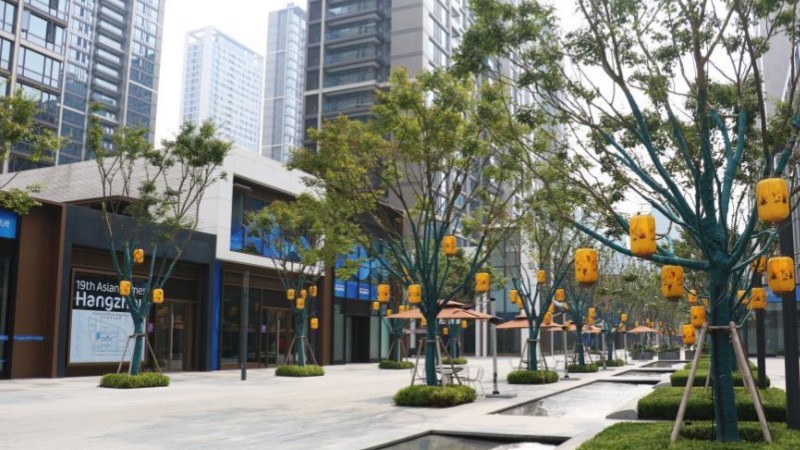Leading energy equipment maker powering China's green transition
CHENGDU, Sept. 14 (Xinhua) -- During the 31st Universiade held recently in the southwestern Chinese city of Chengdu, buses adorned with giant panda-themed elements shuttling through the streets were a common sight.
In addition to their distinctive appearance, what set these buses apart was they were powered by hydrogen fuel cells and could travel 450 kilometers on a single charge, boasting a thermal efficiency 1.5 times that of ordinary internal combustion engines.
The hydrogen-fuelled power system is one of the latest breakthroughs made by Dongfang Electric Corporation (DEC), a leading manufacturer of power generation equipment based in Chengdu.
Established in 1958, DEC currently produces about one-third of China's power generation equipment, serving as a testament to the country's energy transition over the past 65 years.
In the early 1950s, China's energy structure was rather simple, with raw coal accounting for over 90 percent of the country's total energy consumption. In the 1970s, China decided to develop nuclear power in order to diversify its energy structure.
Since 2006, China's energy production has accelerated its shift from traditional energy to clean energy, with rising shares of natural gas, hydropower, nuclear power, wind power and solar energy in the country's energy mix.
Today, China not only has the world's largest installed power generation capacity but has also built the world's largest clean power generation system, with the installed capacity of hydropower, wind power and photovoltaic power generation topping other countries for years.
Behind the rise of China's clean energy sector is the rapid development of the country's energy equipment makers.
DEC and its other counterparts have actively participated in the construction of many landmark power generation projects in China during different periods, including the generator set of "Hualong One," a domestically designed third-generation nuclear reactor, and that of the Baihetan hydropower station, the most technically challenging hydropower project in the world.
"China's energy sector is growing in size and optimizing in structure, and we are a witness to and participant of the ongoing process," said Yu Peigen, board chairman of DEC.
China has announced that it will peak carbon dioxide emissions by 2030 and achieve carbon neutrality by 2060. This pledge has provided additional impetus for the transformation of the energy equipment sector.
In addition to hydrogen fuel, the company has made forays into new sectors such as energy storage, new materials, smart manufacturing and energy services. This year, DEC has put into operation a 5G-enabled smart factory that digitally manages the R&D, production, quality check and other services.
"Short-term pains might be inevitable during industrial transformation, but we believe that deepening reform and boosting innovation, as always, will help us achieve our goal," said Shi Jing, vice director of DEC's corporate governance department.
Photos
Related Stories
- Green development pursued along China's major rivers
- Smart energy powers China's green development
- China inspires global green development with desert control experience
- China to formulate policies, measures to promote all-round green transformation
- China contributes to global green development with low-carbon tech innovation
Copyright © 2023 People's Daily Online. All Rights Reserved.









